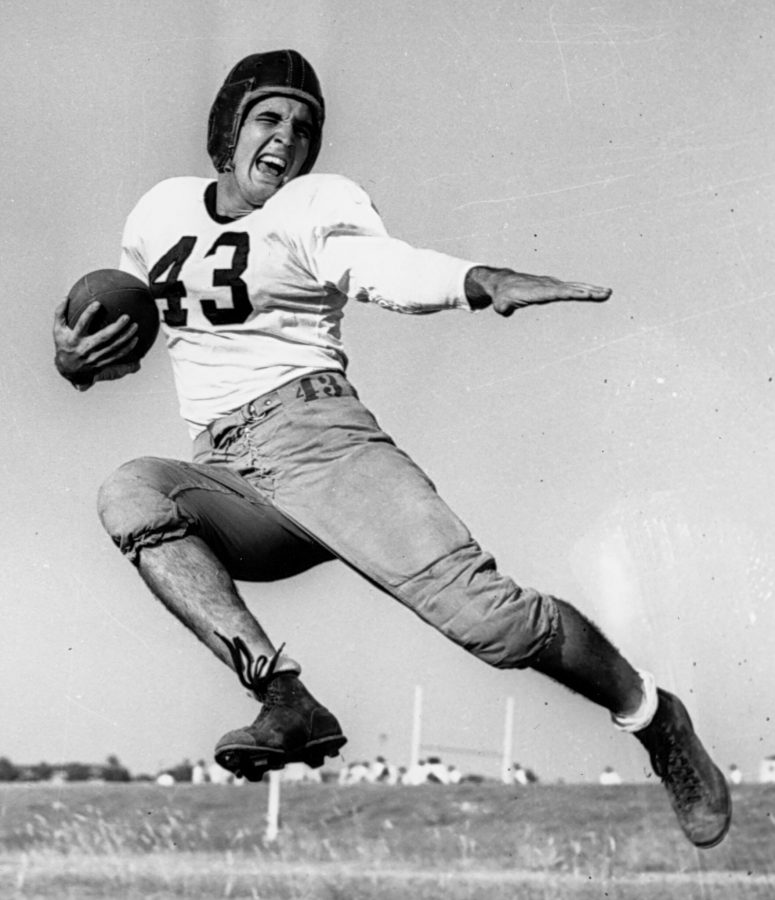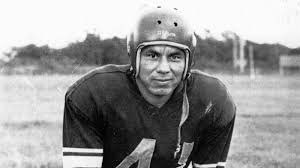Milestone Seasons - Major Passing Yards Marks In The CFL
By Chris Lawton
The 2023 CFL season is firmly in the rear-view mirror now. Records have been added to, for both team and individual statistics as they are every year. While now the focus shifts forward to the 2024 Draft and coming season kicking off in summer.
But, whatever your excitement for the future, if you love the game, you also want to celebrate its rich and storied past., It is always good to celebrate its history. Which got me to thinking. What are the milestone passing yardage season in CFL history? And where should we start looking from?
Where In Time To Start
To be clear, I don’t mean every time the passing yardage record was broken. Rather, each time a milestone was breached. Like the first recorded yardage leader. Or the first 1,000-yard season, 2,000 yard season and so on. What about the CFL? Could we replicate that and see who led what when? Well, yes, and no. Three down football traces its roots further back than the NFL. But the CFL was only founded officially in 1958.
Because of this, even though the Grey Cup has been contested since 1909, we have to start this list in the 1950’s. When dealing with players who played in the CFL we only get statistics dating back to 1950 for the WIFU (West) and 1954 for the IRFU (East). Which means we will start with a WIFU passer from 1950 and go from there. Which means we start in Edmonton.
Lindy Berry (1950) – 2,201 yards

129 of 254 for 2,201 yards, 10 touchdowns and 20 interceptions. Yards per game: 169.
According to Wikipedia this is where the records start. There may be better historians of the game who could make a case for starting earlier. But based on the information to hand we are starting with Lindy.
Berry wasn’t in the CFL long. But he had a great pedigree and made an impact in 1950. In 1998 he was inducted into the Texas High School Hall of Fame. He had played for Wichita Falls in 1944 & 1945, being named statewide player of the year as a senior. Berry was selected to play in the 1946 Oil Bowl squad that defeated the Oklahoma all-stars, 37-0.
After this he played in college for TCU. Where he was an All-American quarterback in 1949. He was all-Southwest Conference in 1947, 1948 and 1949. Berry set a record for most career punt return yards too. In fact, though an All-American QB, while at college he accrued 1,745 rushing yards, 1,372 punt return yards, 729 kick-off return yards, 185 interception return yards, and 32 receiving yards!
He took his talents North in 1950 to play for the (then) Edmonton Eskimos. In his first season with them he was awarded the Jeff Nicklin Trophy given to the best player in the WIFU. But he was hampered by a knee injury in 1951 and retired from football after the season.
Jack Jacobs (1951) – 3,248 yards

204 of 355 for 3,248 yards, 33 touchdowns and 10 interceptions. Yards per game: 232.
I’m sure he wouldn’t have the nickname today, but in his day ‘Indian’ Jack Jacobs was quite the attraction for the Winnipeg Blue Bombers.
Coming out of the University of Oklahoma he was a hugely versatile player. He played quarterback, running back, DB and punter. It was at QB and punting that he particularly excelled though.
Drafted by the Cleveland Rams in 1942 military service interrupted his career in 1943-44 before he returned to the Rams, then played a season in Washington and three more in Green Bay. At the end of which he wound his way to Winnipeg.
Jacobs was an outstanding quarterback for the Winnipeg Blue Bombers for five years from 1950 to 1954. Clearly he was a draw too as Wikipedia notes, “His exciting passing game drew thousands of fans to Blue Bombers games, instigating the need for the city to build a larger stadium”.
He was the Passing Yardage Leader in the West in 1951, 1952, and 1953. Overall, he completed 710 passes for 11,094 yards and 104 touchdowns and kicked 57 singles.
1951 was his best year, a year in which he matched Berry by being awarded the Jeff Nicklin Trophy as the best player in the WIFU. Jacobs was elected to the Canadian Football Hall of Fame in 1963.
Sam Etcheverry (1958) – 4,723 yards
The fact that Sam Etcheverry is still so high on the CFL all time passing list is amazing to me - he must have been so far ahead of his time to compile those numbers when he did. https://t.co/A4kDnlWj0H
— Christopher Lawton (@CFLfanUK) November 13, 2021
276 of 446 for 4,723 yards, 32 touchdowns & 23 interceptions. Yards per game: 388.
The 1950s really did see rapid development in the passing attack if these records are any measure! One man who exemplified a modern passing attack maybe more than most was Sam ‘The Rifle’ Etcheverry.
It is tempting to wonder too if the 4,000-yard barrier was breached earlier. Because The Rifle played in the East, and we don’t have all his records. Etcheverry played his entire nine-year CFL career with Montreal from 1952 to 1960. Where he threw for over 3,000 yards in every season, we have a record for. (We don’t know what he did in right at the start because no stats were kept in 1952 and 1953).
We should remember that when between 1954 and 1960 he never passed for less than 3,000 yards these were 14 game seasons. Apart from a 12 game 1955 season when Etcheverry threw for an amazing 3,657 yards and 30 TD’s.
Most people know that Joe Namath was the first QB to crack 4,000 yards passing in a season in the AFL in 1967. He hit 4,007 yards and 26 TD’s in a 14-game season. Well, the Rifle did it earlier. Sam Etcheverry put together a season in 1956 that wouldn’t look out of place in the modern game. That year over 14 games he completed 61.9% of his passes for 4,723 yards (10.3 yards per attempt) and 32 touchdowns. A season that saw him win Schenley Award for Most Outstanding Player.
The leader in pass completions and yardage consecutively from 1954 to 1959, Montreal put him forward as their MOP five times. But it was in 1954, for the first pro football 4,000-yard season that he was honoured.
Sam Etcheverry finished his CFL career with over 30,000 yards passing and over 180 touchdowns. He also finished with a 56.9% career completion percentage. These were phenomenal figures for this era.
He was elected to the Canadian Football Hall of Fame in 1969.
Warren Moon (1982) – 5,000 yards
333 of 562 for 5,000 yards, 36 touchdowns and 16 interceptions. Yards per game: 313.
After seeing the two-, three- and four-thousand-yard barriers passed in a single decade it would take another 24 years and a 16-game season before Warren Moon hit the next milestone mark with 5,000 yards in 1982.
Moon played six years for Edmonton from 1978 to 1983 and the Eskimos won the Grey Cup in five of those seasons (1978-82). Initially, Moon shared duties with veteran QB Tom Wilkinson. By the end of his stint in Edmonton he was the undisputed starting quarterback.
Moon’s yards passing went up year by year. From 1,112 in 1978 to 2,382 to 3,127 to 3,959 to 5,000 for this season. They would rise again the following year (1982) to 5,648.
The 1982 season we are looking at here saw Moon become the first professional quarterback to pass for 5,000 yards in a season. The 36 touchdowns he threw this season were a CFL career high too.
In his six years in the CFL, Moon made 1,369 completions on 2,382 attempts for 21,228 yards and 144 touchdown.
Moon had a statistically better season in 1983, passing for 5,648 yards but that was a very average season for the Esks. He is best remembered as a key cog in the incredible Grey Cup Dynasty that Edmonton built in the late 1970s/early 1980s.
Doug Flutie (1991) – 6,619 yards
396 of 688 for 6,619 yards, 38 touchdowns and 24 interceptions. Yards per game: 368.
Although he played for the Bears, Patriots, Bills and Chargers over a 13-year NFL career. Flutie may still best remember in the US for a Hail Mary TD he threw in college for Boston. North of the border that is a different story.
Thanks to an incredibly productive and exciting 8 years split between the BC Lions, Calgary Stampeders and Toronto Argonauts, Flutie is remembered as one of the greatest players ever to step on to the larger 3 Down field.
Flutie was signed by the BC Lions for the 1990 season, and it took him a season to adjust to the CFL as he completed 52.8% of his passes in his rookie year, throwing more interceptions (19) than touchdowns (16).
However, by 1991 he had found his feet. The 6,619-yard performance remains the all-time CFL single season record over three decades later.
The big numbers earned Flutie the first of six All-Canadian selections and the first of six Most Outstanding Player awards in the CFL. He would leave as a Free Agent after the season to play for Calgary.
Flutie served notice with this season of an 8-year career in the CFL. A career that would deliver 41,355 yards passing and 270 Touchdowns supplemented by 4,660 yards rushing and a further 66 Touchdowns.
Incredibly he would break 6,000 yards again (6,092 yards) in 1993. As well as passing for 6,000 yards in a CFL season twice he also came within 55 yards of doing it again in 1992 when he threw for 5,945 yards. Meaning that from 1991-1993 he threw for 18,656 yards (345.48 yards per game) showing an incredible period of dominant passing and sustained consistency.
Alongside the personal success and high volume passing, Doug Flutie was busy winning too. He appeared in 4 Grey Cups. The only championship loss coming in 1995 to the Baltimore Stallions. In the three Grey Cup games he did win (1992 with Calgary, and 1996-97 with Toronto), he was named MVP on each occasion.
The First 7,000-Yard Season?
As we can see from this short list the passing game has evolved over time. Quantity has increased as the league season has developed. But the CFL has had an 18-game season since 1986 and a 6,000-yard season has not been achieved since Anthony Calvillo passed for 6,041 yards during the 2004 season.
The highest single season yardage in the recent past is Michael Reilly’s 5,830 in 2017. All of which seems to suggest that we should be looking for the next 6,000-yard season as a huge event rather than even entertaining thoughts of the next barrier. To get to 7,000 yards you need 389 yards per game in an 18-game season – only Etcheverry’s 1958 season would do if you extrapolated out!
Does volume even matter?
There is an eternal debate for fans of sport. Which means more? Quantity or quality? After all, nobody would say Flutie isn’t an all-time great, but he comes nowhere near Anthony Calvillo’s league record 79,816 yards passing. Which were achieved over twenty years in the league. Flutie had a compact and brilliant year compared to that, but Calvillo demonstrated incredible durability in the 3-down league.
A further issue is how do we compare to bygone eras? When the game was very different. This is why we should, in my opinion, look for the GOTE (greatest of their era) rather than the GOAT (greatest of all time). For instance, Tom Brady is arguably the greatest QB ever – but that’s in the modern game. How would he have done as a QB/DB/Punter who played about every down like a Sammy Baugh for instance?
As ever, the joy will be in watching all this play out on the fields of the CFL. Let’s see who comes along and entertains us and breaks records next!

CHRIS LAWTON
CFL ANALYST
Chris originally started following the NFL with the ‘first wave’ of fans when it was shown on Channel 4 in the 1980’s. He has been a keen supporter of the Miami Dolphins since 1983. Chris first encountered the CFL in 2016 and instantly fell in love with the Canadian game. He has been writing about the CFL 2017. Chris has a degree in history, postgraduate degree in librarianship and can be found on twitter as @CFLfanUK
